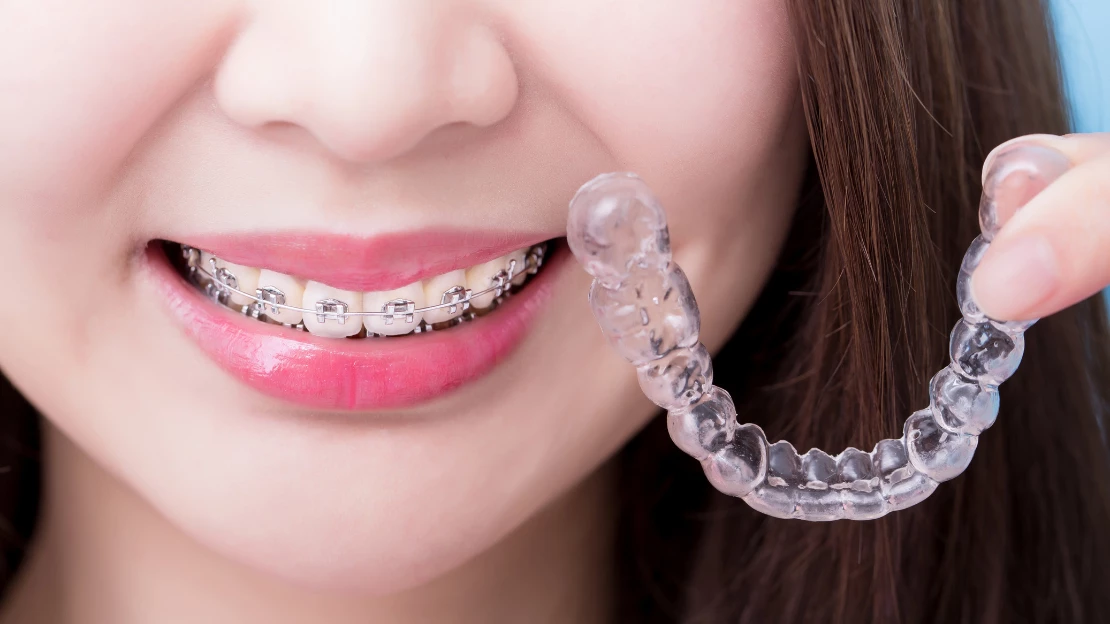An Unbiased View of Legacy Orthodontics
Wiki Article
Legacy Orthodontics Things To Know Before You Get This
Table of ContentsOur Legacy Orthodontics DiariesThe smart Trick of Legacy Orthodontics That Nobody is DiscussingOur Legacy Orthodontics Ideas5 Simple Techniques For Legacy OrthodonticsLegacy Orthodontics Fundamentals Explained
At Advanced Orthodontics, we provide patients with a holistic therapy experience. Additionally, we offer flexible treatment routines, versatile repayment choices and an enjoyable, enjoyable experience. leesburg orthodontist. Call ( 480) 357-4900 today for additional information and timetable an appointment.An orthodontist is a dental expert trained to diagnose, prevent, and treat teeth and jaw irregularities. They deal with existing conditions and are trained to recognize troubles that might create in the future. Orthodontists work with people of any ages, from youngsters to grownups. People commonly link an excellent smile with excellent wellness.
Malocclusion, or misaligned teeth, can result in dental problems, consisting of dental cavity, gum tissue condition, and hard or painful eating. Not everybody is born with straight teeth. If you have a poor bite or large areas in between your teeth, you may wish to consult a dental practitioner concentrating on orthodontic treatment.
The smart Trick of Legacy Orthodontics That Nobody is Talking About
( Photo Credit Rating: DigitalVision/Getty Images) Orthodontists make use of repaired and removable oral tools, like dental braces, retainers, and bands, to change the placement of teeth in your mouth. Orthodontic therapy is for oral irregularities, including: Crooked teethBite problems, like an overbite or an underbiteCrowded teeth or teeth that are as well far apartJaw misalignmentThe objective of orthodontic treatment is to enhance your bite.While you might think of orthodontists as mainly for kids or young adults who need dental braces, they can fix dental troubles at any age. Orthodontists participate in university, oral school, and orthodontic school.
, however not all dental professionals are orthodontists. They focus on two areas: Exactly how to properly and safely relocate teeth Just how to effectively direct development in the teeth, jaw, and faceOnce an orthodontist has completed training, they have the option to become board licensed.
Not known Details About Legacy Orthodontics
Malocclusion leads to tooth congestion, an askew jaw, or irregular bite patterns. Malocclusion is generally treated with: Your orthodontist attaches metal, ceramic, or plastic square bonds to your teeth.If you have just minor malocclusion, you may be able to use clear dental braces, called aligners, instead of typical braces (http://peterjackson.mee.nu/do_you_ever_have_a_dream#c2208). Some individuals require a headgear to help relocate teeth right into line with stress from outside the mouth. After braces or aligners, you'll need to wear a retainer. A retainer is a personalized device that maintains your teeth in position.
They can develop added space in the mouth without having to draw teeth. Orthodontists utilize cables, medical screws, or plates to support your jaw bone.
You might need to see an orthodontist if you have: Crowding or otherwise enough area for every one of your teethOverbite, when your top teeth come over your base teethUnderbite, when your base teeth are also much forwardSpacing or problems with gapsCrossbite, which is when your top teeth fit behind your base teeth when your mouth is closedOpen bite or an upright space between your front base and upper teethMisplaced midline, when the center of your base and upper teeth don't line up Fixing a dental malocclusion can: Make attacking, eating, and speaking easierImprove the symmetry of our face and your total appearanceEase discomfort from temporomandibular joint conditionsDifferent your teeth and make them easier to clean, assisting avoid tooth degeneration or cavities It's often a dental professional that initially notices misaligned teeth during a routine exam.
6 Simple Techniques For Legacy Orthodontics

During your initial orthodontic appointment, you'll likely have: An oral examPhotos taken of your face and smileDental X-raysPanoramic (360 degree) X-rays of your face and headImpressions to produce molds of your teethThese tests will assist your orthodontist know exactly how to wage your therapy. orthodontics. An orthodontist is a dentist who's had training to treat your teeth and jaw
Orthodontists may do surgical procedure, exams,X-rays,and even more to help you achieve a much more comfortable, much healthier smile. An orthodontist is concentrated on your bite, so something like a damaged tooth would certainly be handled by a dental practitioner. Orthodontists are dental experts yet not all dental experts are orthodontists. Orthodontists are concentrated on your bite, or the means your teeth meshed, and the straightness of your teeth. Ever wondered exactly how celebrities always seem to have perfectly lined up teeth? Orthodontists are dental experts that focus on correcting abnormalities in the teeth and jaws.
How Legacy Orthodontics can Save You Time, Stress, and Money.

click here for more , orthodontists have a diverse toolkit at their disposal. These tried-and-true braces use a system of brackets adhered to the teeth and attached by cables.
These removable trays are personalized to considerably move the teeth's position. In situations of slim jaws, palatal expanders can be used to produce space for appropriate tooth alignment.
Report this wiki page